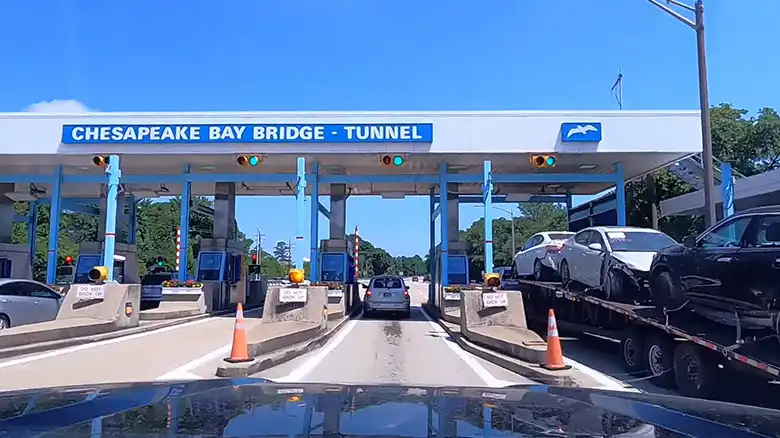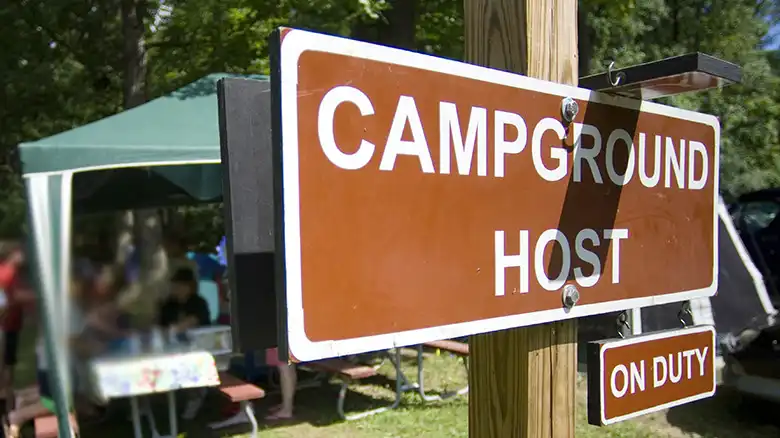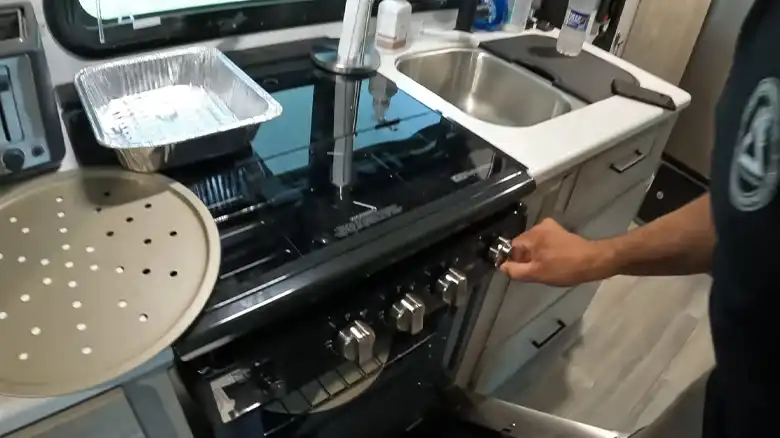The Chesapeake Bay Bridge Tunnel (CBBT) is a 17-mile-long bridge-tunnel complex that connects the Virginia mainland to the Delmarva Peninsula. It is one of the busiest toll crossings in the United States, and it is a popular route for RVers traveling between the East Coast and the Outer Banks.
But can RVs go through the CBBT?
The answer is yes, RVs can go through the CBBT, but there are a few things to keep in mind.
First and foremost, RVs must be under 13 feet 6 inches tall and 10 feet 6 inches wide in order to fit through the tunnels. If you pass through this requirement, then 70% work is done, and will need to follow a few instructions for traveling through the CBBT.

Can RVs Travel Through the Chesapeake Bay Bridge Tunnel?
Here’s the moment you’ve been waiting for – the simple answer is yes, RVs can pass through the Chesapeake Bay Bridge Tunnel. While the CBBT has some restrictions in place, they are designed to ensure safety and to accommodate various types of vehicles, including RVs and campers.
The CBBT allows RVs as long as they meet certain size and weight restrictions. In most cases, RVs up to 13 feet 6 inches in height, 40 feet in length, and 102 inches in width are allowed to traverse the tunnel without any issues. It’s a relief for RV enthusiasts who want to explore the scenic beauty on both sides of the Chesapeake Bay.
So, the next time you find yourself contemplating a road trip through Virginia’s coastal paradise, don’t fret – your RV can join the adventure!
Important Driving Rules for RVs on the Chesapeake Bay Bridge Tunnel
Before you embark on this breathtaking journey, there are some essential driving rules and tips you should be aware of:
Height and Width Limits for RVs on the CBBT
The Chesapeake Bay Bridge Tunnel (CBBT) has height and width restrictions on RVs for safety reasons. The tunnels on the CBBT are only so tall and wide, so RVs must be under 13 feet 6 inches tall and 10 feet 6 inches wide in order to fit through.
If an RV is too tall or wide, it could get stuck in the tunnels. This would cause a major traffic jam, as other vehicles would not be able to pass. It could also create a safety hazard, as emergency vehicles may not be able to reach the scene of an accident if an RV is blocking the road.
The CBBT has height and width sensors at the entrances to the tunnels. If an RV is too tall or wide, the sensors will trigger an alarm and the RV will not be allowed to enter the tunnel.
If you are planning to drive your RV through the CBBT, be sure to check the height and width of your RV before you go. You can find this information in your RV’s owner’s manual. If your RV is too tall or wide, you will need to find an alternate route.
Propane Safety Requirements for RVs Passing Through the Tunnel
Propane is a flammable gas, so it is important to turn off and secure all propane tanks before entering a tunnel. This is to prevent a fire hazard in the event of an accident.
If an accident occurs in a tunnel, there is a risk of sparks or flames. If there is propane in the air, it could ignite and cause a fire. This fire could spread quickly in a tunnel, as the tunnels are enclosed spaces and the fire would have plenty of fuel to feed on.
A fire in a tunnel could be very dangerous, as it could trap people and vehicles inside. It could also damage the tunnel itself, making it difficult or impossible to use for a long period of time.
To prevent a fire hazard, it is important to turn off and secure all propane tanks before entering a tunnel. This means turning off the valve on the tank and closing the lid tightly. The tank should also be secured to the RV so that it cannot move around in the event of an accident.
Wind Restrictions: What RV Drivers Should Know
The CBBT can be windy, especially during the spring and fall months. RVs are more susceptible to being blown around by high winds, so they may be restricted from crossing the CBBT during periods of high winds. This is to prevent RVs from being blown off the road or into oncoming traffic.
There are three levels of Wind restrictions on the CBBT. You can take your RV and drive on until the wind speed reaches more than 35 miles per hour. When the wind speed reaches 35 miles per hour, your speed needs to be reduced to 45 mph and when the wind speed reaches 40 miles per hour, you won’t be able to take your RV through the CBBT.
These restrictions are in place to protect the safety of all drivers who use the CBBT. If you are planning to drive your RV through the CBBT, be sure to check the CBBT website for current conditions and restrictions.
Bonus Tips for Weather Conditions on the CBBT
| Wind Speed Level | Wind Speed (mph) | Prohibited Vehicles | Permitted Vehicles | Maximum Speed |
| Level 1 | 40 | Motorcycles, Large pick-up campers (RVs), Camper trailers, House trailers, anything being towed, Vehicles with exterior cargo susceptible to wind, Six-wheel trucks (e.g., moving vans, rental trucks, box trucks), Buses, Empty tractor-trailers (cargo-less than 15,000 lbs.) | Tractors without trailers, Empty flatbed trailers, Empty car carriers, Empty “low boys,” Empty logging trailers, Tractor-trailers (and tankers) must have a payload of at least 15,000 pounds in addition to the rig’s weight | Speed limit of 45 mph, No overtaking |
| Level 2 | 50 | – | Cars without exterior cargo, Pick-up trucks (2-axle, 6 wheels) without cargo, Mini-vans, Vans (excluding high-profile/conversion vans), SUVs | – |
| Level 3 | 60+ | All traffic closed due to adverse weather conditions or safety concerns. | – | – |
Conclusion
In conclusion, if you’ve been wondering whether your RV can handle the Chesapeake Bay Bridge Tunnel, the answer is a resounding yes, with a few key considerations. As you journey through this marvel of engineering, remember to follow the rules, keep safety as your top priority, and soak in the mesmerizing beauty of the Chesapeake Bay.
I hope this article has put your doubts to rest and provided you with the information you need for a memorable RV trip along the East Coast. If you have any more questions or need further clarification, feel free to leave a comment below. Happy travels, fellow road warriors!


